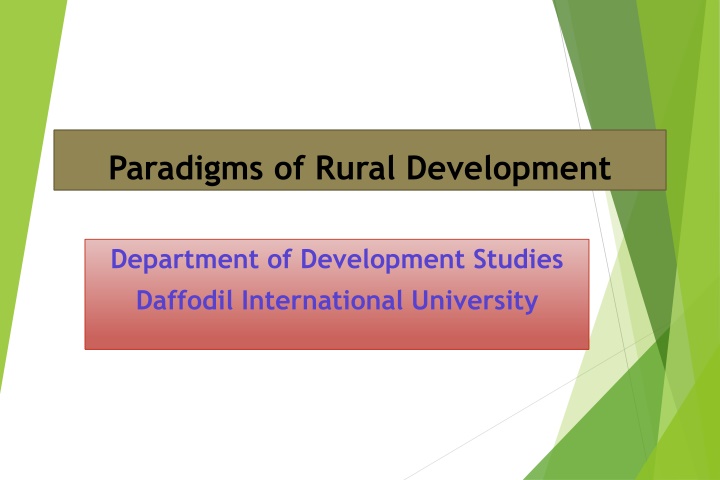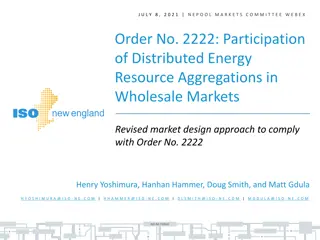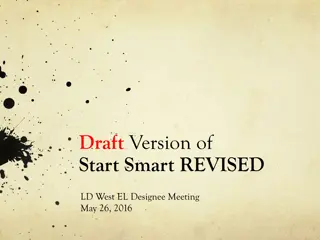
Exploring Modernization Theory in Rural Development Studies
Discover the essence of Modernization Theory, its historical background, key contributors, and key assumptions in the context of rural development. Understand why studying these theories is crucial for gaining insights into rural development techniques and mainstream development thinking.
Download Presentation

Please find below an Image/Link to download the presentation.
The content on the website is provided AS IS for your information and personal use only. It may not be sold, licensed, or shared on other websites without obtaining consent from the author. If you encounter any issues during the download, it is possible that the publisher has removed the file from their server.
You are allowed to download the files provided on this website for personal or commercial use, subject to the condition that they are used lawfully. All files are the property of their respective owners.
The content on the website is provided AS IS for your information and personal use only. It may not be sold, licensed, or shared on other websites without obtaining consent from the author.
E N D
Presentation Transcript
Paradigms of Rural Development Department of Development Studies Daffodil International University
Chapter Objectives Understanding background, Bangladesh context. the Modernization theory, implication its in assumptions, and Discovering Model, its basic assumptions and contribution for rural development the Gandhian Rural Development
Why Do we need to study these theories? Before we start studying rural development, we have to gather a minimum amount of knowledge on the trends and variations of the development approaches taken over time. Theories will give us a simple view on the development techniques which can be applied in the rural areas. Theories will help us to have a clear understanding of the mainstream development thinking.
The Modernization Theory Modernization theory is also known as the Free World model of development . The essence of the theory was the transfer of Western technology and rationality, without changing class structure as a means of development, and removal of all social and ideological obstacles to such a process. In the context of rural development, the theory refers to the adoption of modern technologies, economic practices, and social changes to improve the standard of living and overall well-being of rural populations.
Historical Background It is a theory of sociological and development that emerged in the mid-20th century. Post world war - II expanding poverty in some countries, which developed by Western social scientists, aimed to provide a framework for understanding to promoting economic and social development for newly independent nations.
Key Contributors Various contributions in Modernization theory. scholars and thinkers has Sl No 1 2 Scholars Name Walt Rostow Talcott Parsons Working ground Stages of traditional society Traditional values to more modern Role of mass media Role of entrepreneurship and individual aspirations 3 4 Daniel Lerner David McClelland
Key Assumption of Modernization Theory Application of Western science and technology in order to increase production which development. Convert "modern" in terms of economic, social and cultural characteristics. Stages of Development: Modernization theory is a series of stages which categorized as traditional, pre-modern and modern. Economic Growth: Economic development suggests that as societies advance, move from agrarian economies to industrial and service-based economies. Technological Advancement: The adoption of modern technology and innovation is a key driver of progress. Westernization: Western values, institutions and lifestyles is the pathway to development. is essential for achieving
Key Assumption of Modernization Theory Urbanization: A growing percentage of the population residing in cities and towns is a modernize. Social Change: Social changes refers to improved education, healthcare, and increased social mobility, traditional values and norms. Globalization: Global interactions in modernization process to integrated into the global economy. Dependency on Foreign Aid: Developing Country should receive foreign aid and assistance to facilitate their development and modernization.
Implications of Modernization Theory Modernization theory had significant implications, both in the field of academic study and practical policy-making. Policies: Governments organizations implement this theory as a basis for their development strategies. Development and international Western Model of Development: This led to the promotion of Western ideologies and practices, sometimes at the expense of local cultures and traditions. Focus on Economic Growth: economic growth is a primary indicator which focused on industrialization and infrastructure development.
Implications of Modernization Theory Technology Transfer: Modernization theory led to a push for the transfer of technology and expertise from industrialized nations to less developed ones, such transfers would facilitate their development and modernization. Understanding understanding of social change and the transition from traditional to modern societies. Social Change: It contributed to the
Relationship with Rural Development (Bangladesh Context) Modernization theory has both positive & negative feature in relation with rural development of Bangladesh. Positive Aspects: o Agricultural Modernization: These efforts include the introduction of high-yield crop varieties, irrigation projects, better farming practices, and the use of technology to improve agricultural productivity. o Infrastructure Development: Modernization efforts to development of infrastructure such as building roads, bridges, and transportation networks to facilitate the movement of goods and people which linking rural areas with urban centers and markets. o Social and Educational Improvement: Rural development programs in Bangladesh focus on improving enhancing access to education, healthcare, and social services. Promoting education is seen as essential for increasing human capital.
Impact of Modernization Theory (Bangladesh Context) o Technological Advancements: The adoption of modern technologies in agriculture and rural areas has led to increased efficiency and productivity. This has the potential to enhance the livelihoods of rural communities and reduce poverty. o Economic Growth: The emphasis on economic modernization has contributed to increased agricultural productivity and diversification of the rural economy. Improved farming practices, the introduction of high-yield crop varieties, and irrigation projects have led to higher agricultural yields, contributing to economic growth. o Poverty Alleviation: Bangladesh aims to reduce poverty and raise the standard of living for rural populations by creating income- generating opportunities and providing support to small-scale entrepreneurs and farmers.
Impact of Modernization Theory (Bangladesh Context) Negative Aspects: Western-Centric Bias: Modernization theory's adoption of Western values and institutions is the path to development which may not align with the cultural and historical context of Bangladesh and neglect local traditions, values, and practices. Simplification of Development: Modernization theory can oversimplify the complex development processes and challenges in rural Bangladesh. It often fails to account for factors such as landlessness, population density, climate change, and the unique geographic conditions that affect the country. Social and Economic Inequality: Modernization and economic growth can sometimes exacerbate social and economic inequalities, as not all segments of the population may benefit equally from development initiatives. Marginalized groups may be left behind.
Impact of Modernization Theory (Bangladesh Context) Environmental Sustainability: In the pursuit of economic growth, there is a risk of overlooking environmental sustainability. Modernization efforts, if not carefully planned, can have negative environmental impacts in rural areas, particularly in a country like Bangladesh, which is vulnerable to climate change. Limited Consideration of Local Context: The one-size-fits-all approach of modernization theory may not adequately consider the specific challenges and needs of different regions in Bangladesh because rural areas vary in terms of geography, culture and local resources.
Education in developing world mainly benefits small, local elites (those at the top) It assumes unlimited natural resources for industrial expansion. (ignores ecological issues)
In Conclusion Modernization theory in Bangladesh has led to some positive outcomes, it is important to recognize its limitations and adapt development strategies to the specific needs and challenges of the country, considering local traditions, values, and the impact of climate change which essential for effective rural development.
Gandhian Rural Development Model Gandhian rural development model is based on the principles and philosophy of Mahatma Gandhi, a prominent leader of the Indian independence movement. This model emphasizes decentralized, self- sufficient, and community-driven development.
Key elements of the Gandhian Model 1. Self-reliance and Self-sufficiency: Gandhiji stressed how important it was to be "Swadeshi," which means "self-sufficient." He thought that communities should make and buy things in their own areas so that they didn't have to rely on resources from other places. 2. Development centered on the village: The Gandhian approach puts a lot of weight on improving farming communities. Gandhi dreamed of an India where towns would be able to take care of themselves and their growth would help the country as a whole make progress. 3. Khadi and Cottage Industries: Gandhi pushed for the spinning and weaving of khadi (cloth that is spun and made by hand) as a way to give rural people more power and jobs. At the local level, he thought that encouraging small businesses would help the economy stay strong.
Key elements of the Gandhian Model 4. Economic Decentralization: Gandhi advocated decentralizing economic and political authority. Gandhi feared large-scale industrialization would exploit labor and concentrate wealth in a few hands. 5. Sarvodaya: "Sarvodaya" denotes universal welfare. Gandhi wanted a society where everyone's well-being was considered and development activities lifted the weakest. 6. Gandhiji's communities should run their own affairs. This empowers villagers to participate in life-changing decisions. "Gram Swaraj" village self-governance believed local 7. Non-violence and Satyagraha: Gandhi's rural development strategy is based on non-violence (ahimsa) and satyagraha (truth force). He advocated nonviolent social and economic growth.
Implications of the Gandhian Model in BD 1. Empowerment of Local Communities 2. Promotion of Cottage Industries 3. Poverty Alleviation 4. Agricultural Self-Sufficiency 5. Environmental Sustainability 6. Community-Based Healthcare and Education 7. Decentralized Governance 8. Preservation of Cultural Heritage 9. Social Harmony 10.Disaster Resilience
Limitations/Criticisms of this Model The Gandhian Model of Rural Development self-reliance, local empowerment, and sustainability has limitations today. Its small-scale focus may struggle to manage rising urbanization, technological improvements, and global interconnection. Population increase, change resistance, and ignoring social and environmental complexity limit the model's application. Governance and formal education neglect are difficulties. The model's ideas are still applicable, but urbanization and technology require adaption. Balance tradition and innovation to address diverse development in today's changing global landscape.
Comilla Model as for Rural Development The Comilla Model for rural development is a pioneering approach to rural development that originated in the 1959s in Comilla, Bangladesh (then East Pakistan). It was spearheaded by Akhtar Hameed Khan, a prominent social scientist and development practitioner, who implemented this model through the Pakistan Academy for Rural Development (PARD) in Comilla.
Objectives The Comilla Model aimed to create a comprehensive, people-centered rural development system that addressed economic, social, and organizational aspects of rural life.
Main Features of this Model i. Integrated Rural Development: The model adopted a holistic approach, tackling multiple issues like education, agriculture, infrastructure, and credit access simultaneously. ii. Organizational Framework: The establishment of Village Cooperatives was central to the model. These cooperatives served as grassroots organizations for farmers and rural communities, promoting collective action and decision-making. iii. Institutional Support: Training Programs and institutional capacity-building were implemented to train rural people to manage cooperatives and agricultural activities effectively.
Main Features of this Model Agricultural Modernization: The model promoted the use of modern farming techniques, irrigation facilities, and improved inputs such as high- yield seeds and fertilizers to increase agricultural productivity. Access to Credit: The creation of rural cooperatives helped small farmers access credit from financial institutions, enabling them to invest in agriculture and rural enterprises. Infrastructure Development: The model emphasized the construction of rural infrastructure, such as roads, irrigation canals, and storage facilities, to support agricultural production and improve rural connectivity. Participatory Development: Local communities were actively involved in planning and implementing development programs, ensuring ownership and sustainability.
Strengths of the Comilla Model Participatory Approach: A key strength of the Comilla Model was its emphasis on community participation. People were involved in identifying their needs, planning, and implementing development projects, which fostered ownership and sustainability. Cooperative Institutions: The model promoted the establishment of rural cooperatives (both credit and agricultural) to mobilize local resources. These cooperatives helped small farmers access credit, improved seeds, fertilizers, and other resources. Focus on Agricultural Development: Agricultural productivity was at the heart of the Comilla Model. It emphasized the use of modern farming techniques, improved irrigation, and the adoption of high- yielding crop varieties, which significantly increased agricultural output.
Strengths of the Comilla Model Infrastructure Development: The model stressed the need for physical infrastructure such as roads, irrigation systems, and markets, which enhanced rural connectivity and access to resources. Self-reliance and Sustainability: By focusing on empowering rural communities and building their capacity through cooperatives and training, the Comilla Model promoted self- reliance and reduced dependence on external aid. Training and Education: It established training programs to educate farmers and rural workers on better agricultural and economic practices, helping to develop skills and increase productivity.
Strengths of the Comilla Model Integrated Development Approach: The Comilla Model did not focus on a single sector but took a holistic approach to development by integrating agriculture, credit, education, and infrastructure. Replication Potential: The model demonstrated that successful rural development strategies can be replicated in other regions, as it provided practical and scalable solutions for poverty alleviation. Flexible and Adaptive: The model was adaptive to the local socio- economic conditions and needs of the rural communities. It did not impose rigid systems but encouraged locally tailored solutions. Promotion of Social Capital: By forming cooperatives and community organizations, the model fostered trust, collaboration, and collective action, strengthening social capital in rural areas.
Challenges and Criticism of this Model The Comilla Model, while pioneering and effective in many respects, struggled with issues of inclusivity, dependence on leadership and funding, inequitable benefits, and weak institutional frameworks. Dependency on Leadership Limited Focus on Women Limited to Specific Context Bureaucratic Challenges Inequality in Benefits Lack of Policy Integration Exclusion of the Landless Poor Resistance to Change Dependence on External Funding Focused on Short term Impact Weak Institutional Framework Technological Constraints Political instability






















